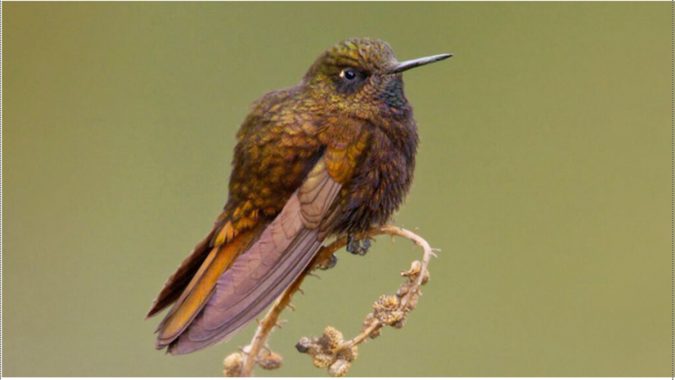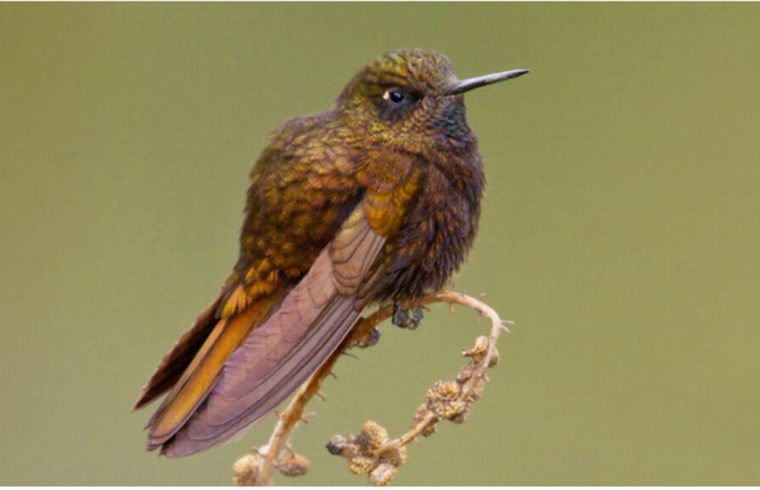Susmita Sah
Black metaltail hummingbird freezes itself into solid to cope the extreme cold temperature.
It’s the coldest body temperature ever recorded in a bird stated in a popular scientific paper ‘Biology Letter’ on September 9, 2020.
According to scientific report, this is one of the most astonishing paradigms of avian adaptation phenomenon against extreme environment can be taken of the black metaltail hummingbird (Metallura phoebe) found in the Andes Mountain of Peru.

Despite of being a paradise for these hummingbirds, the cold, wet and hypoxic environment of Andes Mountain has been a challenge for these tiny endotherms.
At night, the temperature of this region is supposed to dive below freezing point because of which it is really very important for these tiny avian to maintain its body temperature and keep themselves warm.
While all of the endotherms on this earth try to keep themselves warm in cold environment these birds employ an extraordinary and contrasting process in order to cope with the freezing temperature.
To survive the cold nights in Andes Mountain, these bird freeze themselves to 3.26° Celsius as a result they enter in a state of suspended animation viz. torpor. Torpor is characterized by facultative hypometabolism and reduction of body temperature. These humming birds are known to undergo nocturnal torpor.
The research was carried out on 26 individual hummingbirds from six different species. All of the hummingbirds were placed in cages overnight and devices equivalent of miniature rectal thermometers were inserted into their cloacae.
After sometimes the birds were seen to be perching and pointing their bill upwards, fluffing their feathers and finally they stopped moving. All of the species were seen to enter the some kind of torpor, but the black metaltail cooled the most, dropping from a daytime temperature of about 40° C to just above freezing.
“They’re cold as a rock,” says Blair Wolf, a physiological ecologist at the University of New Mexico in Albuquerque. “If you didn’t know better you’d think they were dead.” Cooling to near-death temperatures lets the hummingbirds save precious energy, allowing them to survive the cold night and gear up to feed the next day, Wolf says.
Around sunrise, the hummingbirds start reviving up, warming about a degree a minute by vibrating their muscles. “You see the bird quivering there, then all the sudden its eyes pop open and it’s ready to go,” Wolf says.
It is said that during the day time the heartbeat of these tiny being is about 1,200 times a minute but during torpor but their heart rates plummeted to as low as 40 times a minute. “It’s an astounding drop,” Wolf says, and it could allow these high-altitude birds to cut their energy use by about 95 percent.
By not wasting energy trying to stay warm, these birds can thrive as high as 5,000 meters above sea level. “It’s a remarkable adaptation” stated the research report.
CITATIONS
B.O. Wolf et al. Extreme and variable torpor among high-elevation Andean hummingbird species. Biology Letters. Published online September 9, 2020. doi: 10.1098/rsbl.2020.0428








